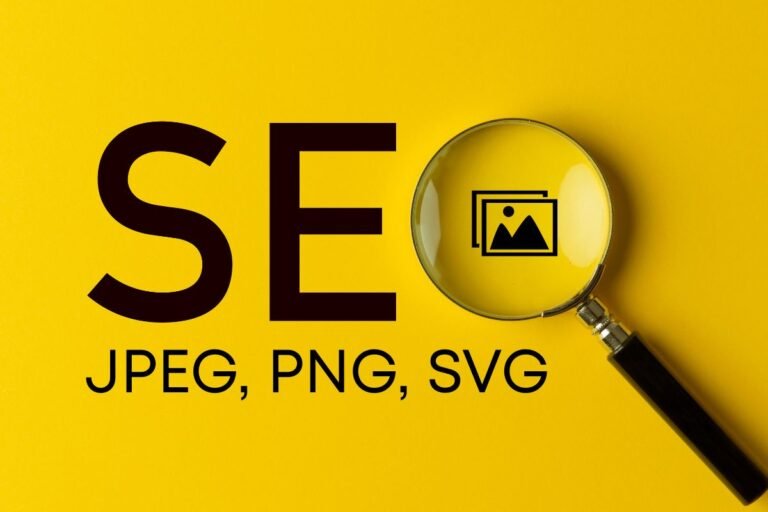
Choosing between Elementor and Gutenberg can feel like picking a lane for how you’ll build, scale, and maintain your WordPress site. One gives you pixel-level control with a true visual builder: the other is the fast, native, performance‑friendly block editor built into WordPress. In this comparison, you’ll get a practical, up‑to‑date (2025) breakdown of features, speed, SEO, accessibility, pricing, and real‑world workflows, plus clear recommendations based on your goals and budget.
Who Each Builder Is Best For
Small Business Owners And Non‑Technical Users
If you want a site that looks custom without hiring a full‑time developer, both tools can work, but the path differs:
- Gutenberg: Best if you’re content‑first and want to move fast. The block editor is built into WordPress, so there’s no extra learning curve for a separate tool. Use a modern block theme (e.g., Astra, Kadence, Blocksy) and pre‑built patterns to launch quickly. You’ll get good performance out of the box and fewer moving parts to maintain.
- Elementor: Best if design matters more than simplicity. With drag‑and‑drop controls, inline editing, and visual responsiveness, you can shape pages exactly how you want. Elementor’s template kits make it feel like a design studio in a box. Expect more power, and a bit more overhead.
Freelancers, Agencies, And Power Users
- Gutenberg: Great for teams who value performance, clean markup, and long‑term maintenance. With the Site Editor (block themes), theme.json, and the Query Loop block, you can build scalable design systems. Pair with ACF/Meta Box/Pods for custom fields and blocks.
- Elementor: Ideal for client work that demands speed to market and visual polish. The Theme Builder, Loop Builder, and WooCommerce Builder let you craft unique templates without touching PHP. You’ll also find a huge ecosystem of add‑ons for advanced widgets, motion effects, and marketing integrations, useful for agencies delivering varied sites.
Bloggers And Content‑First Teams
- Gutenberg shines. It’s faster to draft, revise, and publish. The editor mirrors the front end closely: headings, lists, quotes, and media blocks are lightweight and semantic. Patterns let editors assemble rich layouts consistently. You can still use Elementor for one‑off landing pages if needed.
- Elementor can work for content teams, but full‑page editing adds friction to quick publishing. Use it selectively, homepages, lead gen pages, sales pages, while keeping posts and long‑form content in Gutenberg.
Core Editing Model And Learning Curve
How Gutenberg’s Block Editor Works
Gutenberg organizes content into blocks, paragraphs, images, buttons, galleries, columns, and more. With block themes and the Site Editor, you can also edit headers, footers, and templates visually. The theme.json file centralizes styles (colors, typography, spacing), creating a consistent design system. Patterns and synced patterns (formerly reusable blocks) help teams reuse design sections across pages.
Key traits:
- Native, lightweight, and fast
- Semantic by default (good for SEO/accessibility)
- Design freedom is growing but still more structured than a full page builder
How Elementor’s Visual Builder Works
Elementor is a front‑end, drag‑and‑drop builder with sections/containers, columns, and widgets. You see changes in real time, with granular controls for spacing, typography, borders, animations, and responsive breakpoints. Elementor Pro unlocks Theme Builder (headers, footers, single/archive templates), dynamic tags, Loop Builder, and WooCommerce customization.
Key traits:
- Highly visual, pixel‑level control
- Powerful templates, kits, and widget library
- More overhead than core blocks, but tuned significantly since the flexbox container update
Learning Curve, Onboarding, And Time To First Publish
- Gutenberg: Easiest path to “Publish” because it’s built into WordPress. If you’ve used WordPress in the last few years, you already know how to create content. The learning curve mainly involves patterns, the Site Editor, and choosing a block theme.
- Elementor: Easy to pick up for non‑designers because it’s visual, but there’s more to learn, containers, responsive controls, and widget settings. Once you get it, you can move very fast, especially with template kits.
Bottom line: For content velocity, Gutenberg wins. For design control and landing page precision, Elementor wins.
Design Flexibility And Templates
Granular Layout Control (Grid, Flex, Spacing)
- Gutenberg: Modern block themes support flex and grid layouts, gap controls, min/max width, and fluid typography. You’ll get solid structure with fewer edge‑case issues. Advanced micro‑layout tweaks are improving but still less precise than a dedicated page builder.
- Elementor: Container‑based layouts (flexbox) enable highly custom grids, overlapping elements, absolute positioning, shape dividers, and intricate spacing. If you need art‑direction per section (hero banners, asymmetric grids), Elementor is a joy to use try it.
Widgets, Blocks, And Third‑Party Add‑Ons
- Gutenberg: Thousands of block plugins add sliders, tabs, data tables, forms, and more. Popular options include Spectra, Kadence Blocks, Stackable, GenerateBlocks, and core’s evolving block set. Most are performance‑conscious.
- Elementor: A massive add‑on ecosystem adds advanced widgets (dynamic listings, advanced forms, mega menus, Lottie, parallax, timelines). Packs like Essential Addons, PowerPack, and Crocoblock expand functionality fast. Caveat: more add‑ons can mean heavier pages, curate carefully.
Templates, Patterns, And Design Systems
- Gutenberg: Patterns (and pattern libraries) provide pre‑designed sections you can drop anywhere. Many block themes ship with full site demos you can import. The Site Editor lets you define templates and template parts that pull from theme.json for global consistency.
- Elementor: Template Kits let you import entire site designs, headers, footers, pages, popups. It’s excellent for launching quickly with cohesive branding. The Theme Builder ties it all together across your site.
Global Styles, Reusable Components, And Brand Consistency
- Gutenberg: theme.json is the engine for global styles, color palettes, font scales, spacing, and keeps everything consistent. Synced patterns act like reusable components you can update centrally.
- Elementor: Global colors, fonts, and design tokens help you maintain brand consistency. You can create global widgets and update them site‑wide. For teams that iterate on design, Elementor’s global controls are robust.
Performance And Core Web Vitals
Page Weight, CSS/JS Overhead, And Rendering Path
- Gutenberg: Typically the lighter option. Using core blocks with a performant block theme often results in smaller HTML, minimal JS, and faster First Contentful Paint (FCP) and Largest Contentful Paint (LCP).
- Elementor: Historically heavier, but performance has improved with container layouts, optimized asset loading, and reduced DOM output. Still, expect more CSS/JS than Gutenberg, especially with multiple add‑ons. Keep an eye on Total Blocking Time (TBT) and CLS when stacking motion effects and third‑party widgets.
Practical tips:
- Keep the DOM lean (limit deeply nested sections/containers)
- Load only needed fonts: use font-display: swap: prefer system fonts where possible
- Use modern image formats (AVIF/WebP) and intrinsic sizing
Mobile Performance And Responsive Controls
- Gutenberg: Mobile responsiveness is theme‑led and generally solid. Fluid typography and layout controls keep things stable with minimal tweaking.
- Elementor: Powerful device‑level controls (desktop/tablet/mobile) for spacing, visibility, and typography. This precision is great for design, but over‑customizing can increase CSS and risk layout shifts. Test on real devices.
Caching, Optimization Plugins, And Hosting Impact
Your builder choice matters, but hosting and optimization matter just as much.
- Caching/optimization: WP Rocket, LiteSpeed Cache, SiteGround Optimizer, and FlyingPress are excellent. For media, use ShortPixel, Optimole, or Imagify.
- CDN and edge caching: Cloudflare CDN or your host’s edge cache can slash TTFB.
- Hosting: A fast PHP stack, HTTP/2 or HTTP/3, and server‑level caching move the needle. Managed WordPress hosts (e.g., Kinsta, WP Engine, Rocket.net) can help you hit Core Web Vitals with either builder.
Performance verdict: Gutenberg has the edge for raw speed. Elementor can achieve green Core Web Vitals with disciplined design, good hosting, and the right optimization stack.
SEO, Accessibility, And Maintenance
Semantic Markup, Headings, And Schema Options
- Gutenberg: Core blocks output semantic HTML and proper headings by default. The Query Loop block handles archives with clean markup. For schema, use a dedicated SEO plugin like Rank Math, Yoast, or SEOPress, don’t rely on a builder.
- Elementor: Outputs generally clean markup for headings, lists, and sections, but complex layouts can become nested. Ensure heading hierarchy is logical (one H1, descending order). Pair with an SEO plugin for titles, meta, schema, and sitemaps.
Accessibility Considerations And ARIA Support
- Gutenberg: The WordPress project invests heavily in accessibility and aims for WCAG 2.1 AA. Many core blocks are keyboard navigable with ARIA attributes where needed. Accessibility still depends on your theme and content choices.
- Elementor: Offers accessible widgets and guidelines, but accessibility is user‑dependent, avoid non‑semantic structures, ensure contrast, label controls, and test with keyboard and screen readers.
Recommended tools: WAVE, axe DevTools, and Lighthouse. Choose accessible themes and test forms, menus, and modals.
Content Workflow, Revisions, And Collaboration
- Gutenberg: Excellent for editorial workflows, revisions, drafts, patterns, reusable blocks, and the block lock feature (prevent accidental edits). Works smoothly with collaborative plugins like PublishPress.
- Elementor: Revisions and role controls exist, but page‑level editing is less “editorial.” It’s best for designers/marketers crafting key pages, not day‑to‑day blog publishing.
Update Safety, Backwards Compatibility, And Technical Debt
- Gutenberg: As part of WordPress core, it benefits from long‑term compatibility. Block themes and theme.json reduce custom CSS bloat over time.
- Elementor: A mature plugin with a strong release cadence. But, large updates or add‑on conflicts can affect layouts. Use staging sites, take backups, and update add‑ons carefully to avoid technical debt.
Dynamic Content, Theme Building, And E‑Commerce
Theme Building: Headers, Footers, And Templates
- Gutenberg: With a block theme, the Site Editor lets you visually edit headers, footers, templates, and template parts. It’s powerful and native but relies on your theme’s blocks and patterns for advanced layouts.
- Elementor: Theme Builder gives you visual control over everything, headers, footers, single posts, archives, search results, and 404s. Conditions let you assign templates to specific post types or taxonomies.
Dynamic Fields, Custom Post Types, And Loops
- Gutenberg: Use ACF/Meta Box/Pods to add custom fields, then render with the core blocks, Query Loop, or custom ACF Blocks. It’s performant and maintainable, though more setup.
- Elementor: Dynamic Tags pull data from custom fields (ACF, Meta Box, Pods) into any widget. The Loop Builder lets you design your own post/product listings visually, great for directories, portfolios, and marketplaces.
WooCommerce: Product And Shop Customization
- Gutenberg: WooCommerce Blocks now power carts, checkouts, and product grids with modern, performant markup. Styling is theme‑driven: deep customization may require custom CSS or a block suite.
- Elementor: WooCommerce Builder provides visual control over product pages, archives, and shop components. You can design high‑converting PDPs and category pages without code, though performance tuning is important on large catalogs.
Ecosystem, Compatibility, And Pricing
Plugin And Theme Compatibility
- Gutenberg: Maximum compatibility because it’s core. Some older “classic” themes may need tweaks for full site editing, but most modern themes are block‑ready.
- Elementor: Works with most themes: the Hello theme (by Elementor) is a lightweight blank canvas. Be cautious stacking many widget packs, test compatibility and performance.
Support Channels, Documentation, And Community
- Gutenberg: Documentation lives in the WordPress Handbook and developer resources. Tons of tutorials, YouTube channels, and community forums exist. You’ll also lean on your theme/block plugin docs.
- Elementor: Extensive official docs, Academy courses, and an active Facebook community. Pro users get ticket support. Many third‑party creators publish tutorials and full site kits.
Licensing, Add‑Ons, And Total Cost Of Ownership
- Gutenberg: Free, included with WordPress. Costs come from your theme, premium block suites, and any pro plugins (SEO, caching, forms).
- Elementor: Free core plugin plus Elementor Pro for advanced features. As of 2025, Pro typically starts around $59/year for one site, with higher tiers for multiple sites (check current pricing). Add‑ons and premium kits can add up. Balance the convenience against long‑term licensing and maintenance.
Value perspective:
- Budget and performance focused? Gutenberg + a premium block theme is hard to beat.
- Design‑driven sites and rapid prototyping? Elementor Pro’s speed to polish can pay for itself on client work.
Recommendations And Decision Framework
Choose Gutenberg If…
- You want fast load times and strong Core Web Vitals with minimal tuning
- Your site is content‑heavy (blogs, knowledge bases, editorial workflows)
- You prefer native, future‑proof WordPress features and fewer moving parts
- You’re okay with structured layouts guided by a block theme
Recommended stack: A performant block theme (Astra, Kadence, GeneratePress), Rank Math or Yoast for SEO, WP Rocket or LiteSpeed Cache, and ShortPixel/Optimole for images.
Choose Elementor If…
- You need pixel‑level control and on‑brand landing pages without coding
- You want visual theme building, dynamic listings, and WooCommerce design control
- You work with clients who expect custom layouts and fast prototyping
- You can budget for a Pro license and keep add‑ons curated
Recommended stack: Elementor Pro + Hello (or a lightweight compatible theme), a selective widget pack (only if needed), WP Rocket/FlyingPress, and image/CDN optimization (Cloudflare + AVIF/WebP).
Hybrid Setups And Migration Considerations
You can absolutely mix both:
- Use Gutenberg for posts and standard pages: use Elementor for homepages, sales pages, and lead gen.
- Start with Gutenberg, then import Elementor templates for campaigns.
Migrating from Elementor to Gutenberg (or vice versa) takes planning. For Elementor to Gutenberg:
- Rebuild key templates with site patterns and the Site Editor
- Replace complex widgets with block equivalents
- Test forms, popups, and menus
For Gutenberg to Elementor:
- Map templates to Theme Builder
- Use Loop Builder for archives
- Keep performance guardrails: minimal add‑ons, optimized assets
Always migrate on staging, run Lighthouse and WebPageTest, and validate tracking, forms, and schema.
Conclusion
Both builders can deliver excellent WordPress sites in 2025, the right choice depends on your priorities. If speed, simplicity, and long‑term maintainability are top of the list, Gutenberg wins. If you need visual precision, dynamic templates, and rapid client delivery, Elementor shines. Many teams use a hybrid: Gutenberg for content velocity, Elementor for conversion‑focused pages.
Next steps: Explore recommended tools to round out your stack. Try a fast block theme (Astra, Kadence, GeneratePress), an SEO plugin (Rank Math or Yoast), and a caching solution (WP Rocket or LiteSpeed Cache). If you’re leaning to Elementor, demo Elementor Pro and a template kit to see how quickly you can ship a polished design. And if you want hosting that keeps Core Web Vitals green, consider managed WordPress options like Kinsta, WP Engine, or Rocket.net.
Ready to build smarter? Compare plans, test a few templates, and spin up a staging site to see which workflow feels right for you.
Key Takeaways
- Elementor vs Gutenberg boils down to priorities: choose Gutenberg for speed, native workflows, and content velocity, or pick Elementor for pixel-level design and high-converting landing pages.
- Gutenberg typically wins Core Web Vitals out of the box, while Elementor can hit green scores with lean containers, curated add-ons, strong hosting, and image/CDN optimization.
- Agencies and power users should use Gutenberg’s block themes, theme.json, and Query Loop for scalable systems, or leverage Elementor’s Theme/Loop/WooCommerce Builder for rapid, visual prototyping.
- For SEO and accessibility, Gutenberg outputs semantic HTML by default; with Elementor, maintain clean heading hierarchy, avoid deep nesting, and pair both with an SEO plugin.
- Budget and maintenance favor Gutenberg’s free core, whereas Elementor Pro adds cost (and potential add-on bloat), so stage updates and keep your stack minimal.
- A hybrid Elementor vs Gutenberg setup works for many teams: publish posts and routine pages in Gutenberg and reserve Elementor for homepages, sales, and lead-gen templates.
Frequently Asked Questions
Elementor vs Gutenberg: which is better for SEO and performance?
Gutenberg generally wins on speed and Core Web Vitals because it’s native, lightweight, and outputs semantic HTML. Elementor can still achieve “green” metrics with disciplined design, optimized assets, quality hosting, and minimal add‑ons. Watch Total Blocking Time and CLS if you stack animations, heavy widgets, or multiple third‑party packs.
For small businesses, should I choose Elementor or Gutenberg?
Pick Gutenberg if you want fast setup, solid performance, and simple content publishing using a modern block theme and patterns. Choose Elementor if design precision matters more—template kits, visual controls, and responsive tweaks help you ship polished pages quickly, though you’ll accept a bit more overhead and plugin management.
Can I use Elementor and Gutenberg together on the same site?
Yes. Many teams run a hybrid: Gutenberg for posts and standard pages, Elementor for conversion‑focused homepages, landing pages, and sales funnels. Keep add‑ons curated, optimize images and fonts, and test with Lighthouse or WebPageTest to ensure both editing experiences still deliver stable layouts and strong Core Web Vitals.
Elementor vs Gutenberg for WooCommerce: which is better?
Gutenberg uses modern WooCommerce Blocks for carts, checkout, and product grids with performant markup, but deeper styling may need CSS or a block suite. Elementor’s WooCommerce Builder gives visual control over product templates and shop elements, ideal for custom PDPs and category pages—just optimize assets to protect performance.
Can I automatically migrate Elementor pages to Gutenberg?
There’s no one‑click tool that perfectly converts Elementor layouts to Gutenberg. Converters exist but often break styling, dynamic content, or complex widgets. The reliable path is to rebuild key templates with block patterns and the Site Editor, then replace feature equivalents. Do it on staging and validate forms, tracking, and schema.
Is Gutenberg enough for complex sites, or do I need Elementor?
Gutenberg can power complex sites using block themes, theme.json, Query Loop, and custom fields via ACF/Meta Box/Pods—great for performance and maintainability. Elementor shines when you need pixel‑level art direction, visual theme building, and rapid client iterations. Choose based on whether scalability and speed or design precision is your top priority.


